How To Water Your Garden To Get The Best Results
Today, we will map out some easy tips on How To Water Your Garden to get the best results. Over the years I have learned quite a bit on growing our food and watering was one of the nost important. There is a right and a wrong way and this guide will get you on the best plan.
Learn the best approach to watering your garden more effectively so your plants thrive this growing season. Whether you are learning how to start a backyard garden or have been growing for years, these tips are great to read.
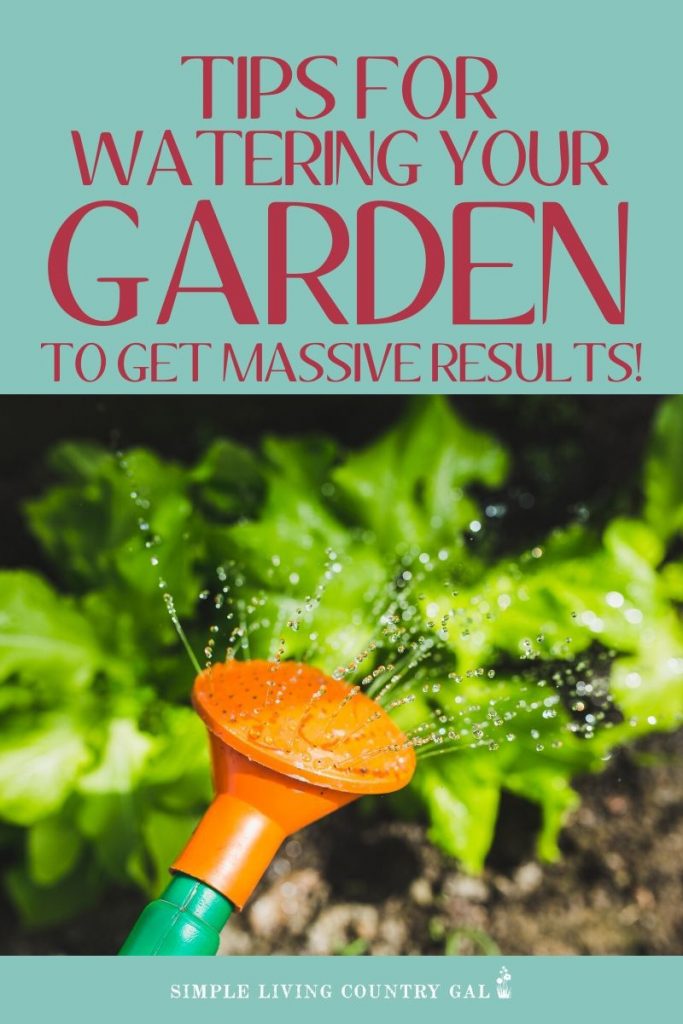
You worked so hard getting your garden ready. You prepped your soil, did the tests, and adjusted things to get a good, solid foundation. In March, you got busy starting plants from seeds inside your home. You then planted those young fragile plants in perfect rows spaced exactly as suggested.
Finally you added a layer of organic mulch to ensure your plants have moist ground for their roots to take hold and grow strong.
So, you’re good now, right?
Unfortunately, no. Not quite.
I cannot tell you how many times I would take care to do everything right only to ruin it all with my watering.
Little did I know there is a right way and wrong way to water the plants in your vegetable garden and unfortunately for me back in the beginning, I was doing it all wrong.
I was watering my plants the wrong way and at the wrong time of day.
Once I learned HOW to water and WHEN to water my garden took off strong and healthy.
I now get double the produce from each of my plants. Not to mention the quality of my vegetables is by far the best I have ever had. And bonus, now, that I am watering correctly, diseases are infrequent, and pests are easier to control
Yes, the secret to an abundant, thriving gardening is watering.
A simple yet crucial task that can be a game-changer if done correctly. On the flip side, it can also encourage disease and pests if done incorrectly.
How to Water Your Garden Step by Step
Not all plants are created equal, and knowing how much water each of them needs and the best time to water is the key to growing a full and bountiful garden.
Be sure to grab my FREE watering guide below so you know how and when to water each plant in your backyard garden.
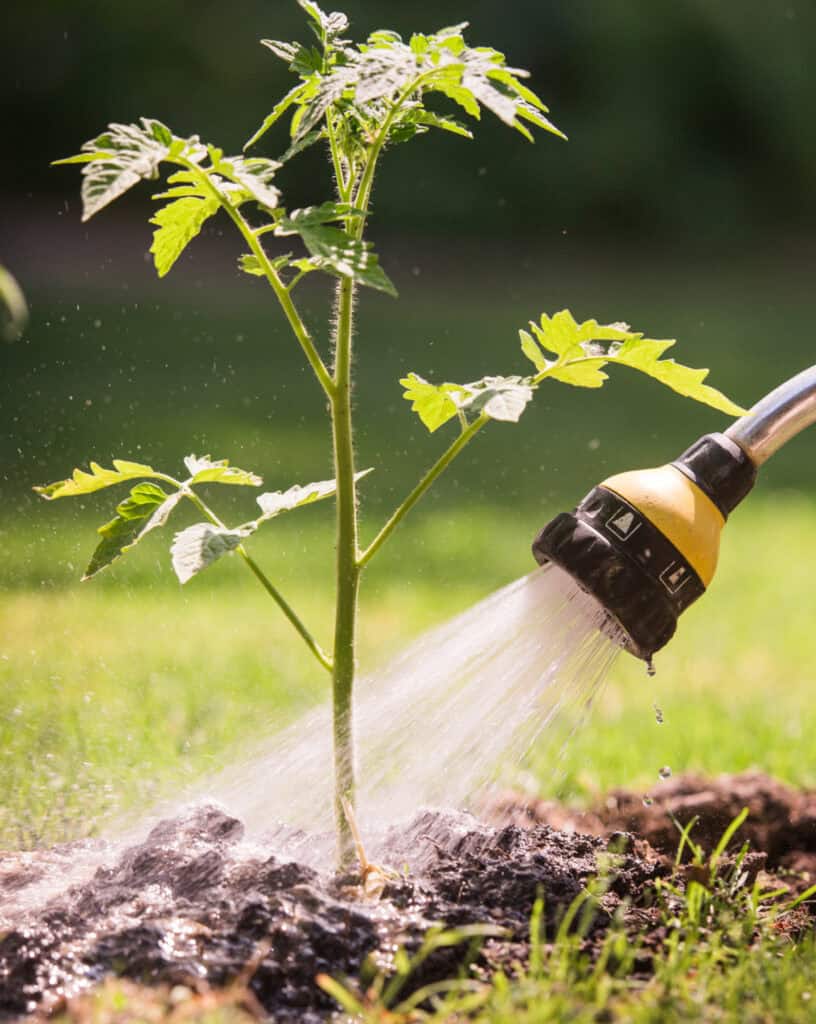
Step #1. Know Your Soil
Not all soil is the same and knowing what you have will help determine how often you will need to water.
To know for sure, you will want to test your soil to adjust and prepare for an optimum growing foundation. If, for example, you have clay soil, more water will be held in the ground and longer. Sandy soil will hold less water, meaning it will dry out faster.
When starting a garden, knowing the soil type early on will allow you to amend it and better prepare your ground for watering. Just a few adjustments can help your soil to hold water longer giving your plants the moisture they need without allowing your plant’s roots to sit in overly wet ground.
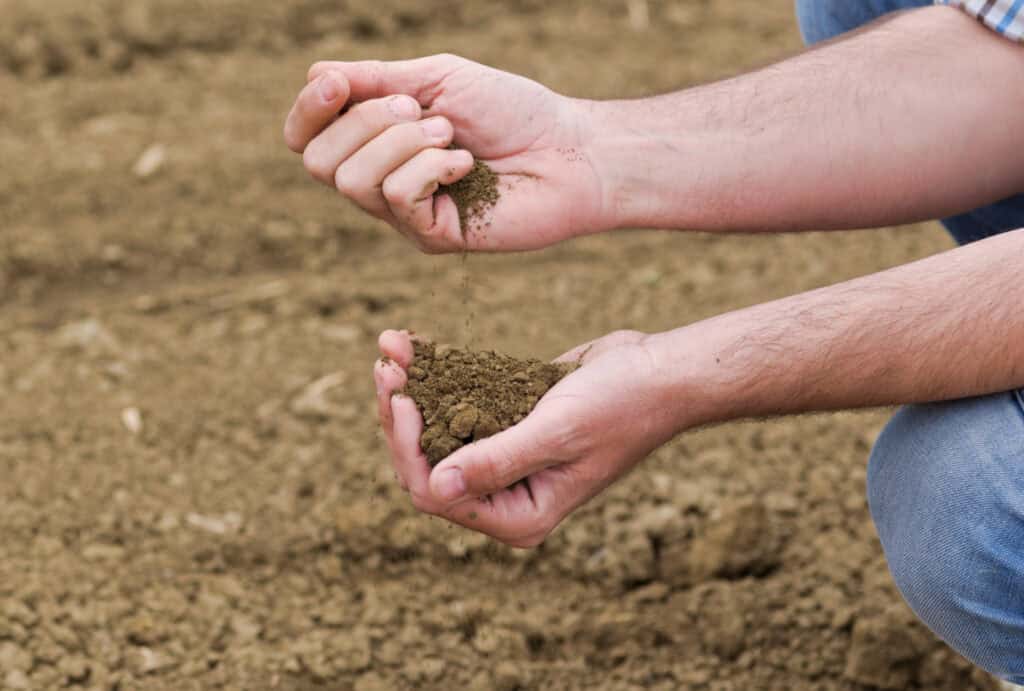
You can improve your soil by adding compost from your compost area, or by purchasing compost online or locally. Compost will not only add nutrients to the soil but it will also add air which will help when you are watering.
More Compost Resources to Read:
Step #2. Watch the weather
I know, probably a no brainer, yet if you water blindly you will not get the results you want. Watch your weather and adjust things accordingly.
If you have hot, dry weather, you will need to water more frequently and for a more extended amount of time. This style of watering is called soaking. Another way to soak your garden is to use an irrigation or soaker hose.
If you see that a cold snap is coming you will want to cut back on your watering to help avoid freezing or frost.
The same holds true if rain is in the forecast; you will want to check the ground around your plants and water if things feel dry. You can also use a soil moisture reader for more accurate results.
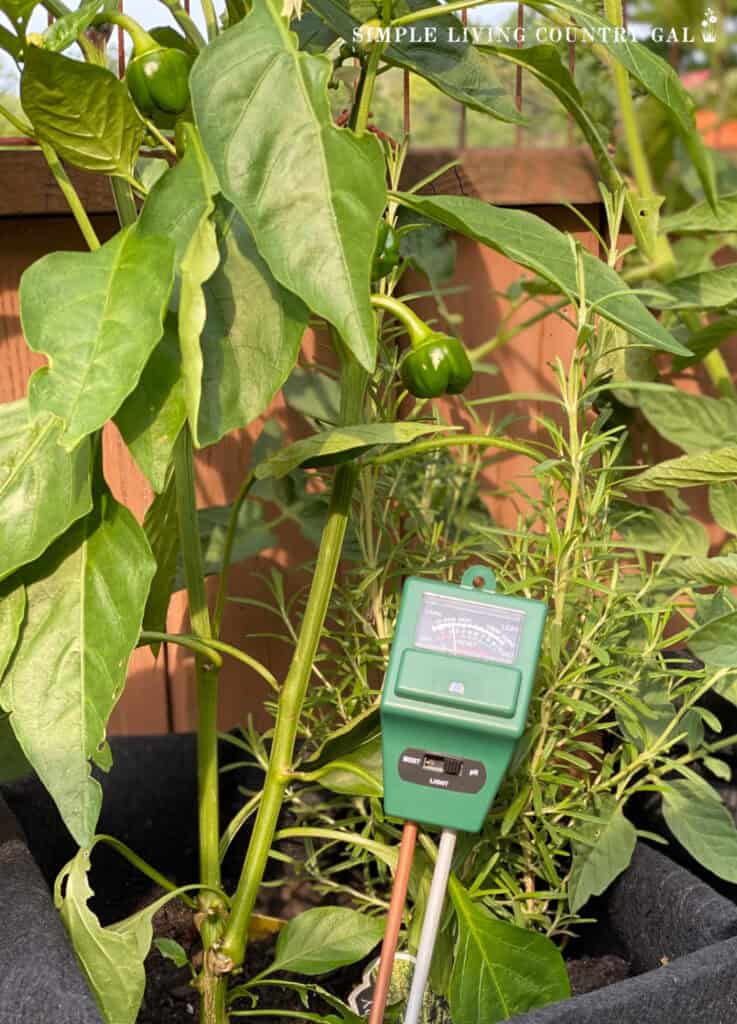
To test the soil for dampness, poke your finger into the ground at the base of your plant. You are looking for damp and cool rather than dry and hot.
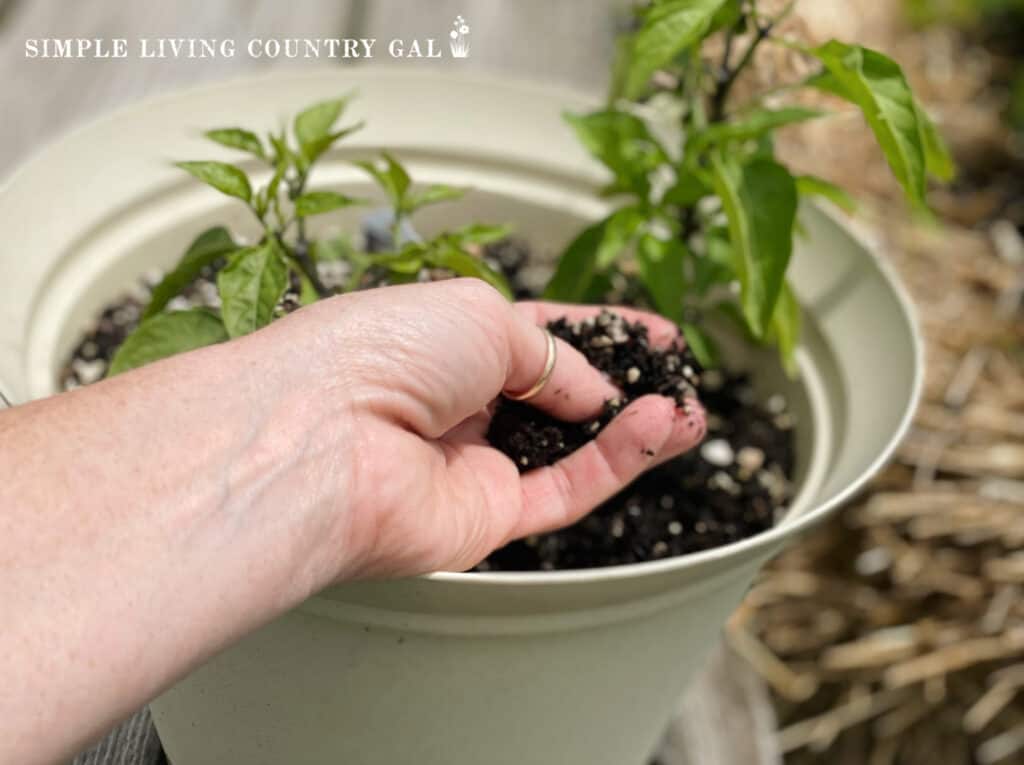
Step #3. Know your plants
Not all plants need to be watered as frequently as others and knowing the difference will help you to plan your watering routine more efficiently.
Here are a few examples.
- Seedlings and seeds will do better with a light watering frequently through out the day.
- Larger plants will do better with a long soak.
- Vegetables will need to be watered more often because of their shallow root system.
- Fruit bushes and trees can be watered less frequently.
I like to keep track of what I have planted throughout my garden so I can more easily set a schedule for watering. This not only helps me to remember what needs to be done when, but it also is quite useful for anyone that may be filling for me.
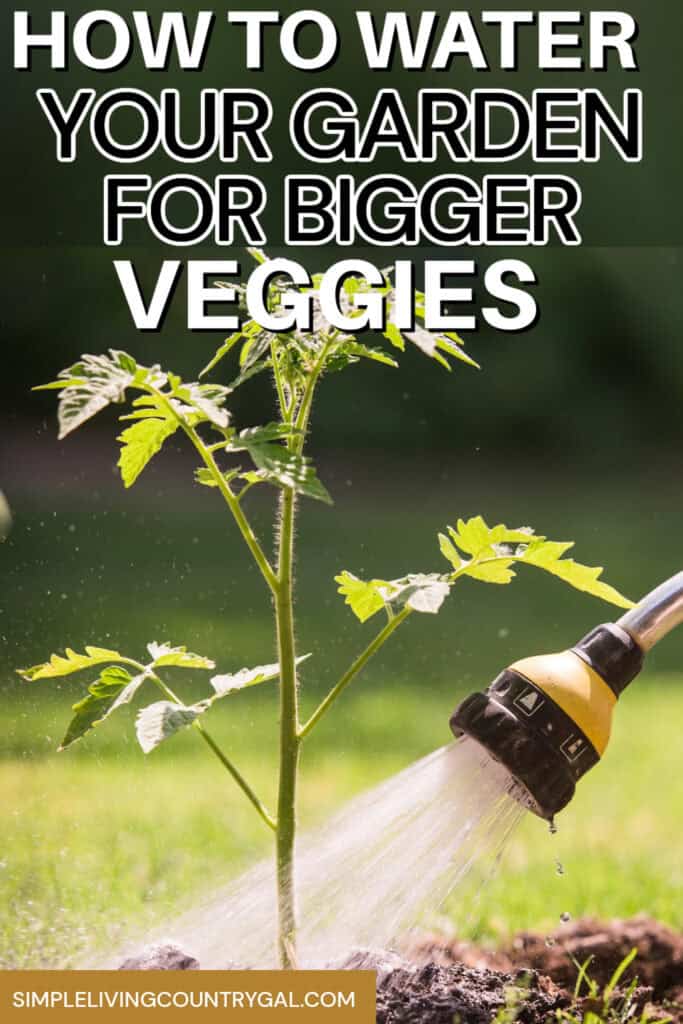
The easiest way to do this is to use a calendar and write in what is to be watered, the time of day, and how much in minutes.
Having this all down on paper lets me stay on top of things. Sure, it may be a bit overkill, but for me, it is worth it. A lot of time and money goes into our vegetable garden, and we rely on it to fill our pantry and freezer for the winter season.
For this reason, it is important I get the best results possible.
Don’t forget to grab your FREE watering guide below!
GREEN MOUNT Watering Wand, 24 Inches Sprayer Wand with Superior Stainless Head, Perfect for Hanging Baskets, Plants, Flowers, Shrubs, Garden and Lawn




Step #4. How to Water
The best way to water your plants is at the base of the plants focusing mainly on the roots. This means you will be watering close to the ground.
The roots are actually what need the water most, so focus your attention there. Since most garden diseases originate in the soil, keeping that soil off the plants and leaves is important. To ensure this, you will want to water close to the ground to avoid splashing dirt onto the leaves of the plant.
This one tip will go a long way to helping your plants grow disease-free.
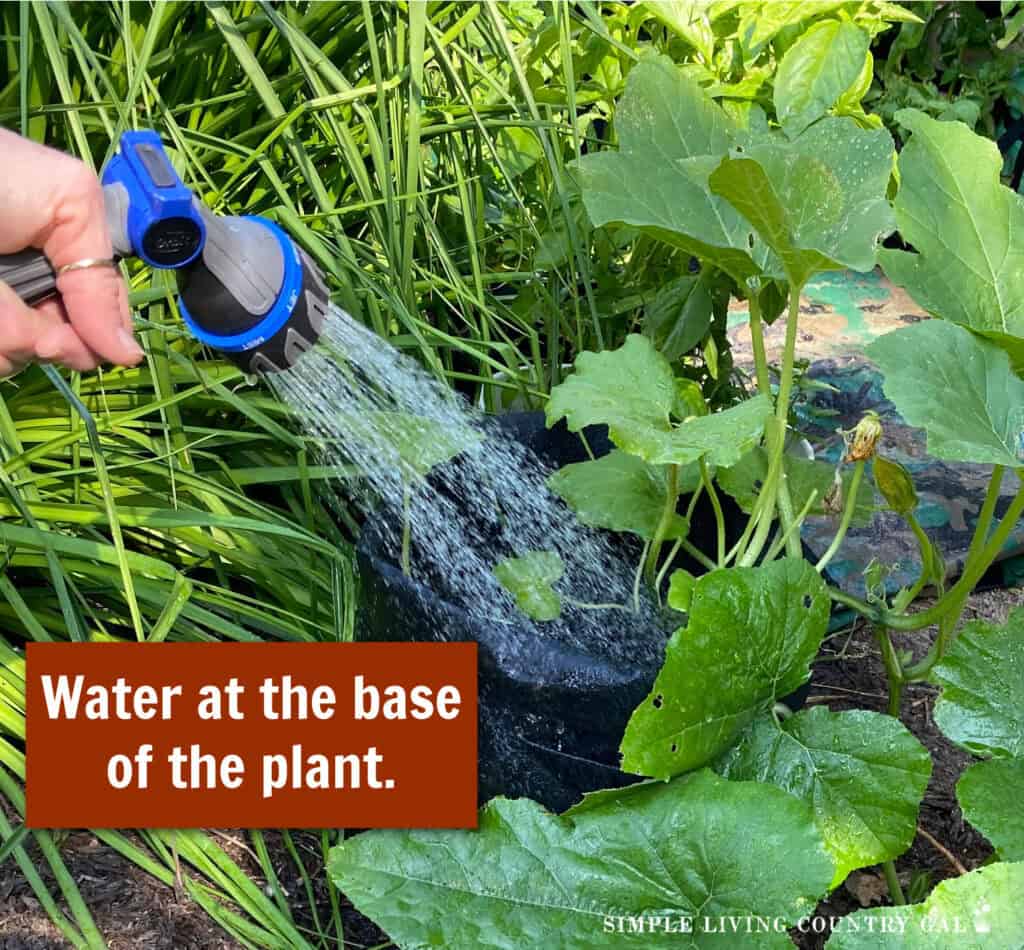
Step #5. Mulch your plants
Many times, mulching is done to keep weeds from growing, but having mulch in your vegetable garden does something else. It keeps the ground moist longer.
Read my post on How To Mulch Your Garden for a great overview. This will help you understand why you want to mulch and what materials are best for your vegetable garden.
Mulch acts as an insulator keeping the dirt moist for longer periods of time throughout the day. Mulching will also ensure the soil stays off of the plant when watering.
I cannot stress enough the importance of keeping the soil off of the leaves of your plants.
Rule of thumb: Water at the base of the plant, not from the top down. If you must water from the top down, put a layer of mulch around your plants to keep the ground moist.
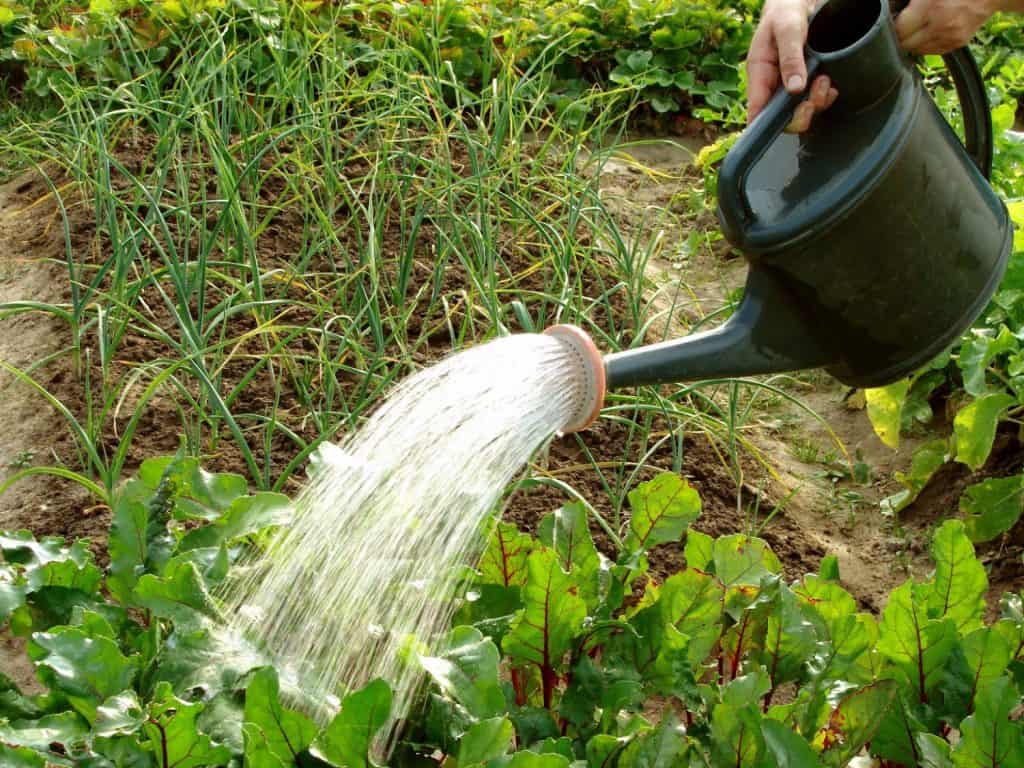
To mulch, you can use any organic materials that are healthy for the ground around the base of your plants. Grass from your lawn, shredded leaves, even straw all work great to keep your plant from drying out.
SLCG PRO TIP: Do not use mulch from other people unless you are sure of their garden and lawn care practices.
One year I was given several bags of leaves to use as mulch in my garden. A good idea I thought at the time, however, those leaves also came with a few pests that I did not have in my area. The following summer, my garden was full of hatching larvae that turned into a full infestation.
To be safe, only use purchased reliable mulch or mulch from your own property.
Step #6. When to Water
Knowing the best time to water will help you to give your plants the very best care.
Morning Watering
Mornings are the best time to water since temperatures are cooler, reducing evaporation. Watering in the mornings is also a great way to prevent mildew, which can occur if leaves remain wet for a long period of time.
Afternoon Watering
If you must water in the afternoon, make sure you focus the water at the base of your plants. This will keep the water from quickly evaporating in the hot midday sun.
Evening Watering
Evening waterings increase the risk of mildew forming on your leaves because cool evening temperatures may prevent wet leaves from drying.
Watering at night can attract pests such as slugs. Slugs can do crazy damage to your plants in a short amount of time.
SLCG Pro Tip: If you suffer from slugs as we do and raise chickens, you can use them to keep these pests under control. Use a fence to get your chickens near to your garden without letting them get to your delicate plants. having them close is usually enough to cut down on the number of slugs you may have.
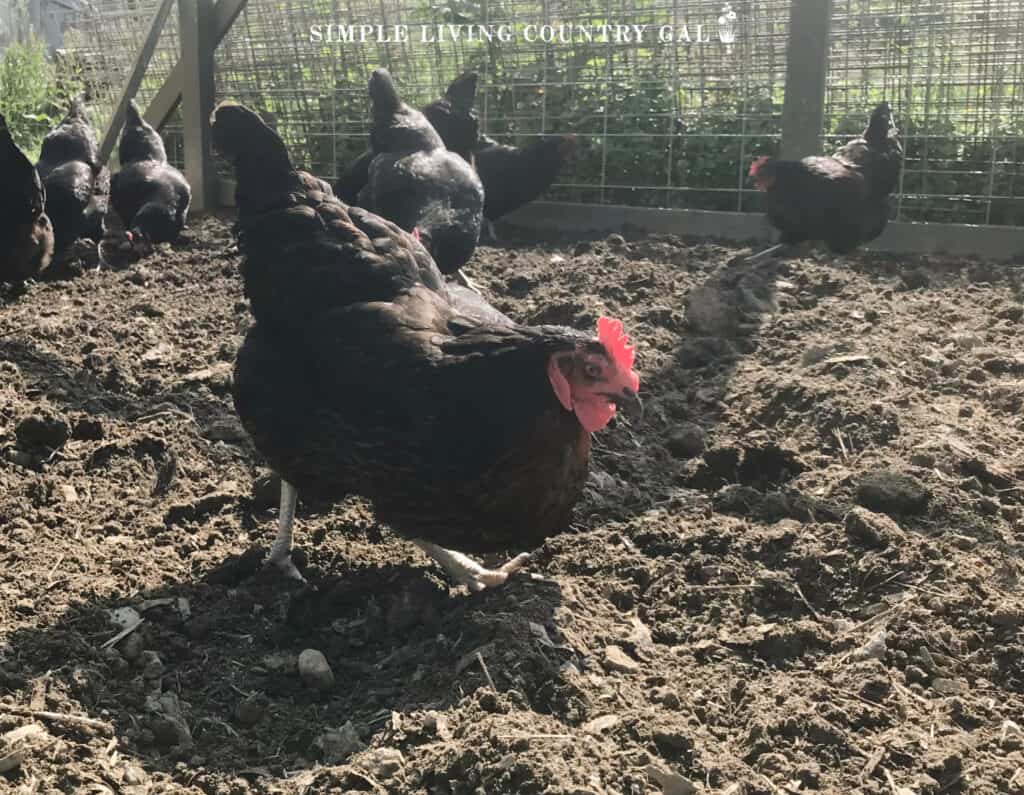
Step #7. How much water
A typical garden with good well-draining soil should be given about 1-2 inches of water, depending on the plants you are growing. You can use a sprinkler or a soaker hose to water your garden making this chore more efficient.
Be sure not to drown your plants, as too much water can cause the roots to rot. You are looking for damp, not dry, or sopping wet.
Young plants and seedlings will need more frequent watering. When in doubt, check the soil with your finger to see just how wet it is.
Step #8. What to Use for Watering
There are many options on the market that you can use for watering your garden. Sprinklers, a hose and nozzle, and even a rain barrel are all great options.
Drip irrigation is a great way to give a good steady water to your garden that will be entirely focused at the base of the plant.
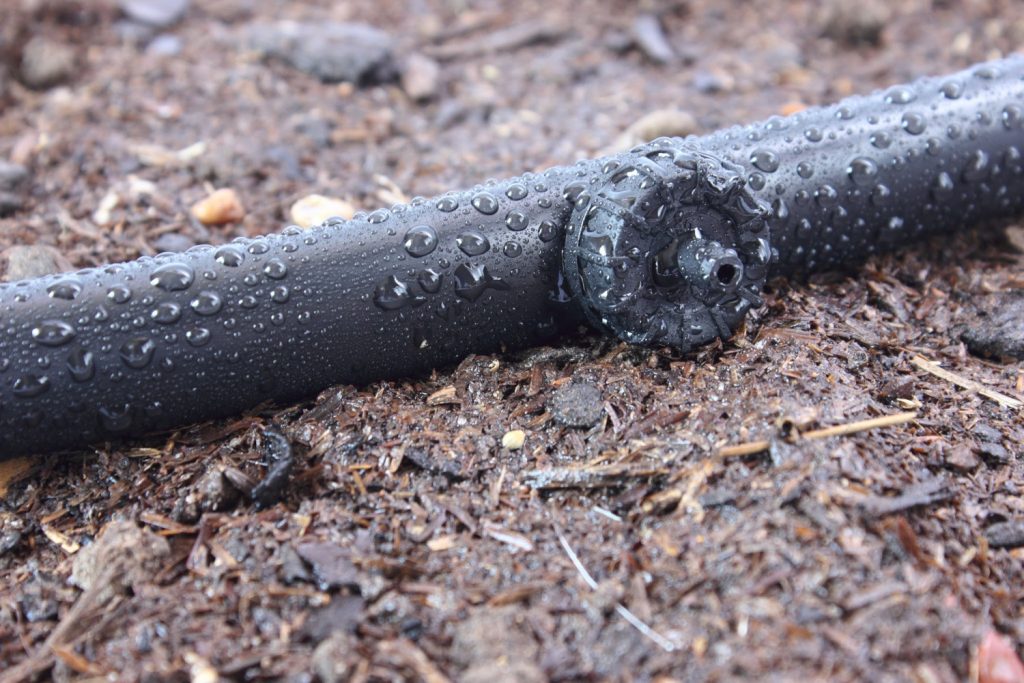
Since we have a well and a large garden we are unable to use drip irrigation. Instead, I prefer to use a soaker wand and I have had excellent results. The long handle helps ensure that water stays down near the roots where it is needed. It also gives a good and heavy shower of water that helps me to give that “soak” I am looking for.
If you have a small garden you can simply hand water with jugs or a watering can and do the job just fine.
BONUS STEP: How to Water your plants in containers.
If you are a container gardener, then you will want to adjust things a bit when watering plants that are in pots.
Too much water and you can drown the roots, risking root rot, water too little, and you risk the plant drying out.
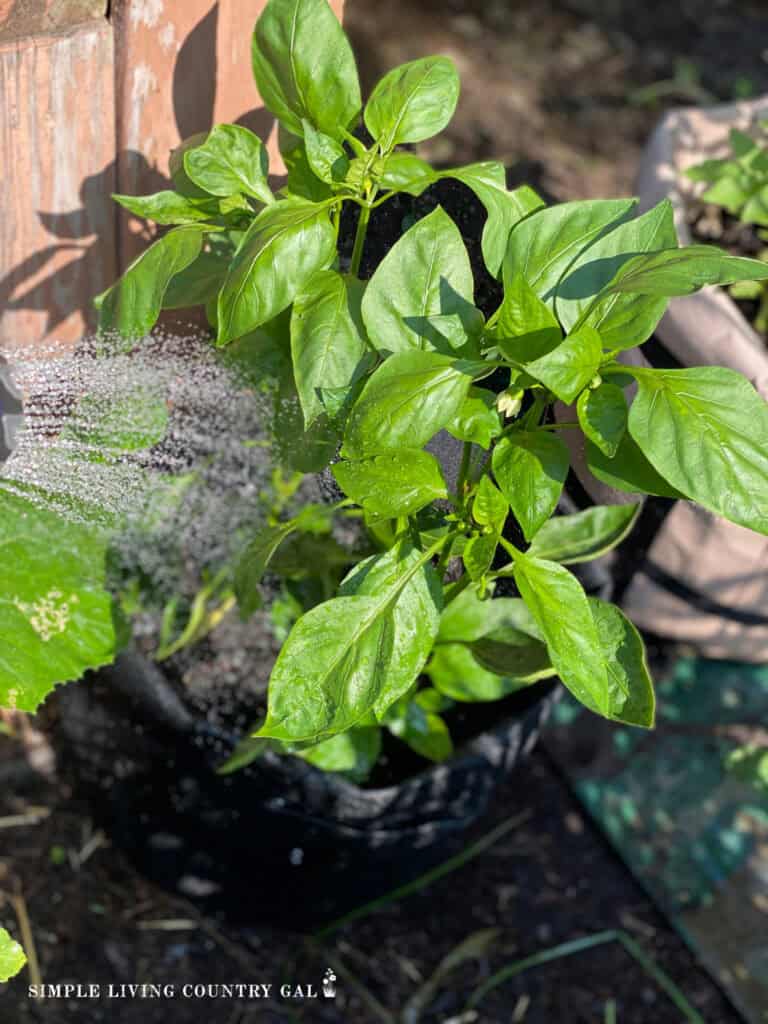
The trick to watering plants in pots is to do a little and more often. That means you are going to be watering your plants at least once if not twice a day. The time you water will still be the same as the tips I gave above but the amount will all depend on the age of the plant and the size of the pot.
To know how much to water, simply stick your finger into the soil at the base of the plant. If it’s damp you are right on target. Wet means you will need to cut back a bit and dry means you will want to water more frequently.
Knowing how to water your garden is a simple yet essential step that new gardeners often overlook. If you know when and how to water, you will not only ensure a bountiful harvest but also lay a foundation for plants to fight off pests and diseases.

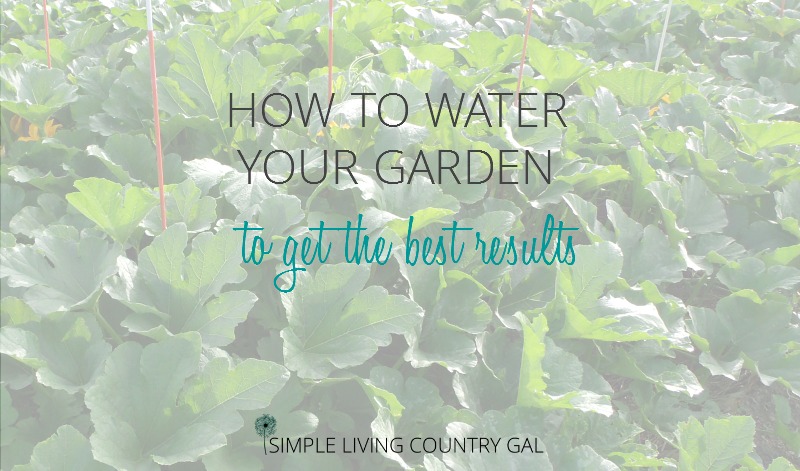






We are SO prepping our yard right now…unfortunately—and you’re going to love this, Tracy–but our HOA does not ALLOW gardens!!!
Not sure what YOU do, but my middle digit pops up on my right hand and I do it anyway. So we’re sorting rocks, digging up lawn and building grow boxes!
HAH!
Take THAT, ya anti-veggie, dirtbags. Gonna get my onions and potatoes any way I can…
(and BTW–I cut onions like a BOSS.)
Water is in small supply here in the desert of Utah, AND we have clay, not soil. So I’ve got to find a way to actually create the soil to use I my grow boxes…
Any suggestions, Tracy?
Jaime Buckley
Your BIGGEST Fan!
Hi Jamie!
We are also in “clay-ville” here in PA. It took me a while to build and create our soil but I am in a good spot now. I added manure, then I purchased a truckload of soil, mixed it all in with my clay dirt, tested then I added more compost, tested again, added more manure, finally tested once more. Now I am at a point where I am good and things are growing just great! Make your adjustments small, test after each and tweak again. You can also purchase your soil to get started mixing it in with what you have. I know it’s a pain but once you get the soil to a good point, you will have wonderful success! Hopefully you can container garden until you get things to a good quality. Good Luck!
Tracy Lynn
It’s a sunny day finally with a small amount of snow left on the ground. I cannot wait to start planting! My husband usually does the vegetable garden, and our kids stop to help some, but I do the trees, plants, and flowers! Can’t wait!!
Yes, Patty, I cannot wait to get outside in the warm sun! I am always so impatient this time of year.
Tracy Lynn
I’m going to try some container gardening this weekend. So helpful, Tracy!
Sue
Good for you Sue! I am so glad….wish I lived someplace warm that allowed gardening in March. But no, I must instead wait for the snow to melt before I can play in the dirt. 🙂
Tracy Lynn
Dearest Tracy,
I LOVE gardening! I started my tomatoes and peppers last week and they’re already popping up! So exciting.
Today I was soo tired and completely out of it, so to focus my mind I started my second batch of seeds. Up next: Kale, Lettuce, Zucchini, and Onions!
My yard isn’t large and grass does not like to grow (probably because the mice destroy my yard every winter by borrowing) so I’ve given up on growing grass and I’m turning the entire thing into a garden. My next batch will be my squashes. Hehe!
Thanks for the helpful tips, I think I’ll get my Mulch on this year.
– Nadalie
Hi Nadalie!
I am so impressed with your seed starting operation. What a wonderful bounty you will have! How big is your garden?
We don’t normally start kale, lettuce, zukes or onions. Might give it a try this year. 🙂
Tracy Lynn
Hi Tracy,
Sadly it’s not very big, maybe the size of two folding tables?
HOWEVER, this year I’ve given up completely on trying to grow grass so once the weather gets nicer I’m going out there to dig up all the “sad grass” and create rows for growing all my veggies!
I’m so excited, it’s been a few weeks since my comment above and they’re coming along nicely!
Kale is SUPER easy to grow. I think that only 1 plant survived because critters were dining on my seedlings, but we harvested from it at least 4 times.
yay spring,
Nadalie
I have never grown Kale, glad to hear it is easy…may need to add that to my veggie list this year!
Tracy Lynn
I am also anxious to get out in the garden, and it is warming up here in Ohio. Soon! I work with a lot of drought-tolerant succulents and like to conserve water as best I can. Here’s hoping for a great warm spring.
Kim I am so anxious to get in the dirt I am rushing things a bit! Nothing soothes the soul like working in the garden, don’t you think? 🙂
Tracy Lynn
In N.Michigan, our sow direct date us June 10 we are a zone 4. I did start cantaloupe seeds inside yesterday. The end if the month will be more melon and lettuce. Can’t wait to start the rest. I do my own goat/horse/leaves and hay compost. Last year was mi first garden, going bigger this year.
Hi Sherry!
I am starting melons for the first time this year indoors. I have the WORST luck with watermelon and I hope having a good sturdy plant rather than a seed will give me a good headstart. Good luck with your bigger garden this year!
Tracy Lynn
Love your blog! This year is my first year for a garden. Its very small but I’m excited to grow some veggies and hoping to expand next year. Thank you for the tips!
Hi, Davi!
Aw, you’re so sweet! I started out small as well. That is by far the best way to garden. If you start out too big, you are just setting yourself up for headaches and heartaches. Trust me, I’ve done the legwork. 😉 I have much more posts for the gardening coming soon, make sure you sign up for my newsletter so you don’t miss any!
Thanks so much for stopping by,
Tracy Lynn
Hi there,
I just discovered your blog and so far I love what I’ve read. I’m in the beginning phase of preparing my garden for the 2nd year. Last year I went full force and planted quite a few different crops. Sadly alot didn’t make it. Mainly because I was in a last minute hurry and alot of the crops wasn’t in the best of spots to get everything they needed to thrive, such as too much or not enough sunlight and inadequate soil. So this year I’m moving practically the entire garden to the opposite side from last years and Im using multiple containers and raised beds so I can place different crops in different areas according to their specific needs. Ive been into growing flowers for many years now but I’m determined to become just as successful with my veggies. So wish me luck and Happy Gardening Yall!!
Hi, Amanda,
Boy, do you sound like me when I first started out! I must have moved my garden 6 times or so before I found the perfect spot. I am not saying that will happen to you, but I have been there. The beginning was a lot of experimenting but I am happy to say I am in a good spot now and my plants are thriving. Focus on that soil so you have a great foundation. Raised beds are perfect in areas where soil isn’t the best. I can’t wait to hear how you do, keep me posted!
Tracy Lynn